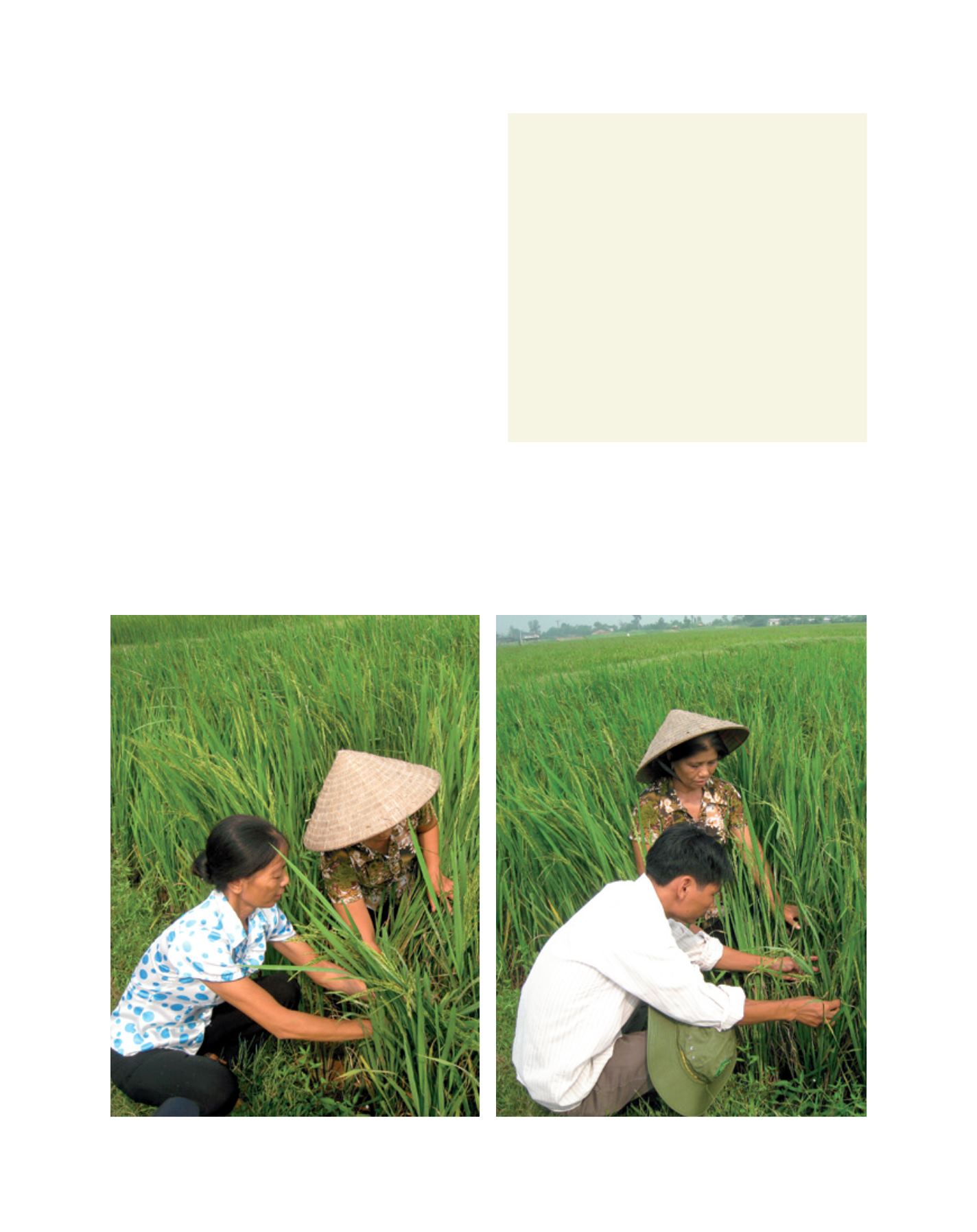

[
] 34
D
eep
R
oots
Farmers lead a culture of innovation
Half of the world’s people consume rice. An estimated 1 billion people
are engaged in growing rice. Most of them are poor, with women doing
more than half of the work. In 2002 Oxfam started promoting the
System of Rice Intensification (SRI), an agroecological method to help
women and men in rice farming communities improve their food and
income security and increase their resilience to shocks and stresses.
As of 2013, more than 1.5 million smallholder farmers in groups
supported by Oxfam’s partners in Cambodia, Sri Lanka and Viet Nam
have benefited from SRI using both improved and local rice varieties.
Learning SRI and collaboration around its adoption has given
farmers a greater confidence in public spaces and in experimenting
with new methods. Farmer-led practices such as the hand-held
rotary weeder in Cambodia, the System of Teff Intensification in
Ethiopia, the minimum-tillage potatoes method in Viet Nam, and
home gardens in Sri Lanka are proving effective and addressing
time-poverty for women. SRI is now adopted in more than 50
countries around the world. The journey of SRI demonstrates that
with a relatively simple grass-roots innovation on hand, small-scale
farmers can make a world of difference.
Empowering people
As a global organization working in more than 90 coun-
tries, Oxfam works directly with communities to create
sustainable local food systems while also tackling underly-
ing root causes that perpetuate poverty. At all levels, the
key lies in people, in building their power to claim their
basic human rights. Farmers who can claim their rights
can access and control the resources they need to grow
nutritious food that feeds their families and benefits local
economies.
What does this look like in practice? In its 2010/11
edition of
The State of Food and Agriculture
report, the
Food and Agriculture Organization stated that if women in
rural areas had the same access to land, technology, finan-
cial services, education and markets as men, agricultural
production could be increased and the number of hungry
people reduced. This would not require opening up more
area for agricultural production. It would also not require
investing in expensive technologies. Instead, it is a ques-
tion of gender equality: of changing mindsets and cultural
norms, of changing laws and policies so that women have
the same rights as men to buy, sell or inherit land, to access
credit, and so on.
Growing food more sustainably
Likewise, there is a lot that is already known about how
to grow food in a more sustainable way. There is ample
evidence that the industrial model based on intensive use
of synthetic fertilizers and pesticides is unsustainable,
contributing to greenhouse gas emissions and destroy-
ing biodiversity. Although investments in agriculture are
increasing, the 2013 United Nations Conference on Trade
and Development noted that current priorities are still
SRI instructor farmer Tran Thi Lien checks the rice fields in Dong Phu commune, My Duc district, Hanoi province with her neighbour and local extension worker in Viet Nam
Images: Le Minh/Oxfam America
















